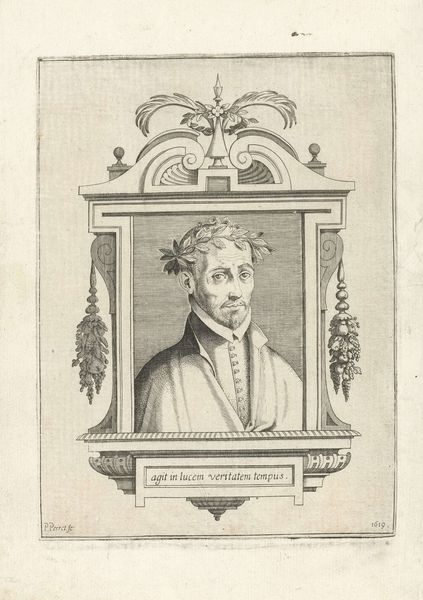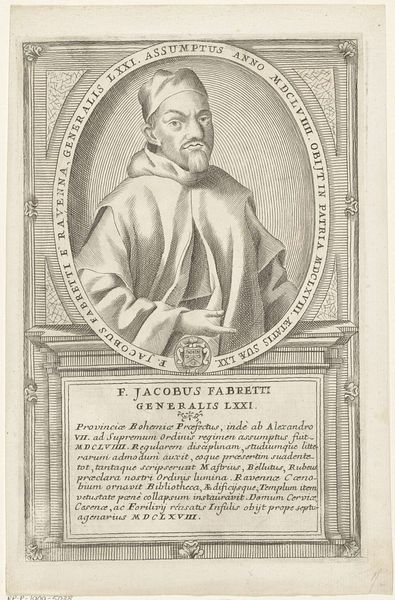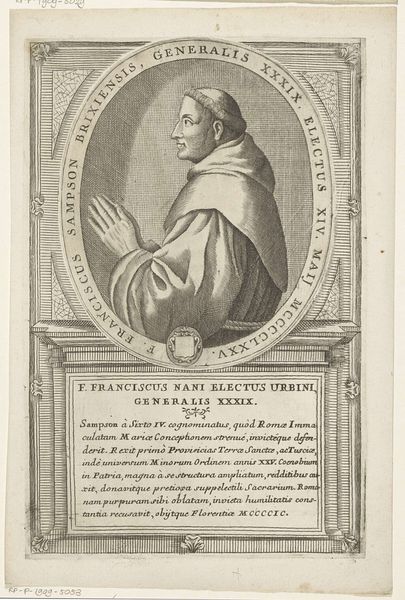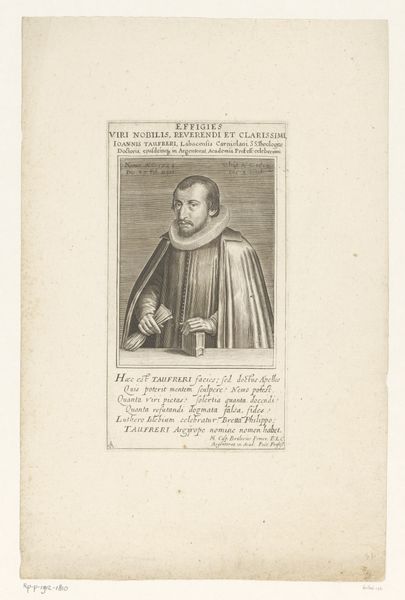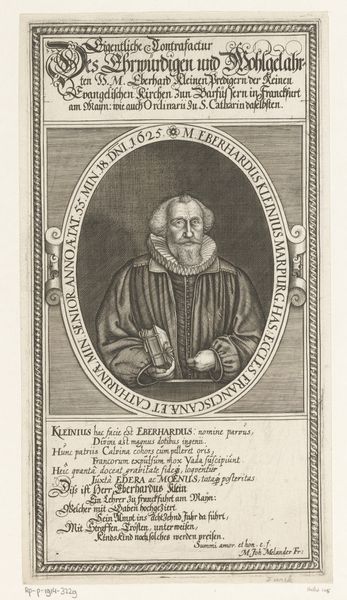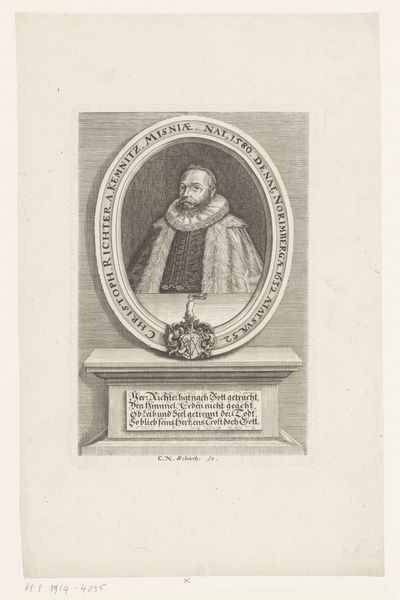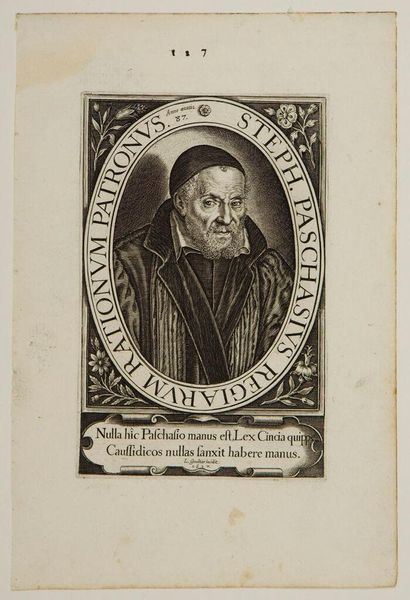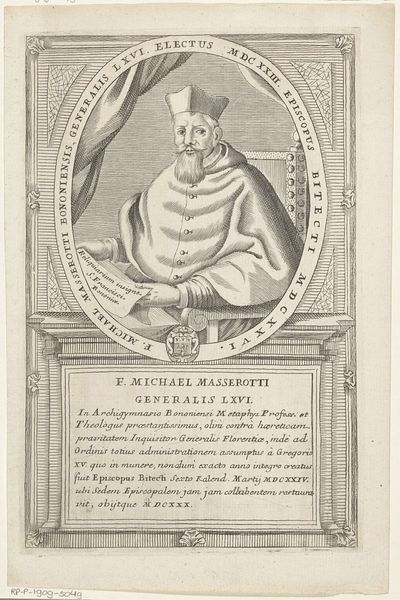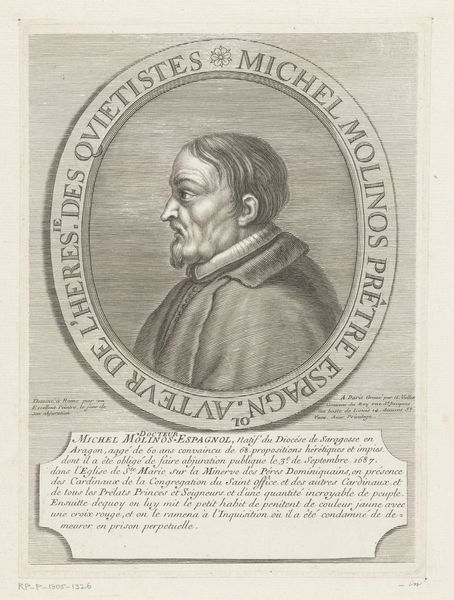
print, engraving
#
portrait
# print
#
old engraving style
#
mannerism
#
engraving
Dimensions: height 167 mm, width 117 mm
Copyright: Rijks Museum: Open Domain
Editor: We're looking at a portrait of Martinus Bucer, an engraving made in 1599 by Hendrick Hondius I, currently held at the Rijksmuseum. It’s a striking image; very formal, and intensely detailed for a print. What are your thoughts on its historical and cultural significance? Curator: It's fascinating how this image serves as a form of public memorialization and participates in shaping Bucer’s legacy, long after his death in 1551. Prints like these, circulated widely, helped establish the reputations and influence of figures in the Reformation. Consider how this relatively accessible medium allows for the dissemination of a specific, controlled image to a broad audience. What does his attire suggest about his societal role, and how might that be strategic? Editor: His clothing looks like what a clergyman might wear. So, its like reinforcing his authority through the institution of the church. Is it fair to interpret the formal style as enhancing his importance in the viewer's eye? Curator: Precisely. And think about the museum context now. The Rijksmuseum validates and preserves a specific understanding and historical positioning of Bucer and figures like Hondius I. It presents and interprets that history for the public. By examining where these artworks are placed, the company they keep, and the narrative the museum provides, we can unpack the layers of power at play. Do you see any specific clues as to how Bucer wished to be seen by the public and by later generations? Editor: The inscription seems to highlight the impact and longevity of his writing… maybe this engraving itself aims to accomplish just that - keeping his ideas alive for centuries to come. Curator: Exactly! So, even a seemingly straightforward portrait opens up avenues for considering questions of religious and intellectual authority, image control, and public memory. Editor: That’s a fascinating point about how portraits help craft legacy; thank you! Curator: My pleasure, this exploration of how museums affect what we value about the past is especially relevant today.
Comments
No comments
Be the first to comment and join the conversation on the ultimate creative platform.
